

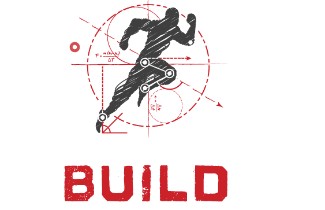
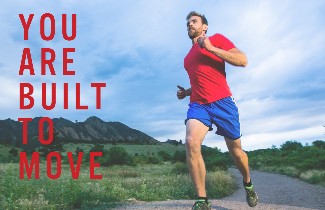
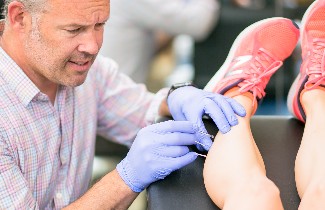
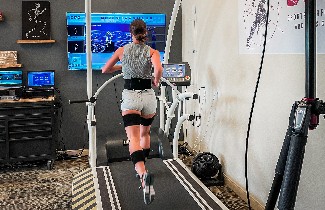
We are all built to move, but when the geometry and balance of the body falls out of alignment, movement becomes difficult and less fluid. Misalignment causes deficits in some areas, leading to over-compensation in others. Weaknesses and inefficiencies in areas can create stress on other structures up or down the kinetic chain. This results in a suboptimal chain of power which saps performance and increases risk of injury.
At BUILD, our goal is to create bodies that move efficiently, powerfully, and gracefully. We interpret movement as a whole-body system of cause and effect. We focus on finding and treating the root cause of the injury, as opposed to simply addressing symptoms of an injury. All athletes should be able to perform the basics when it comes to movement of their sport and with full range of motion. Anything less and you’re not being all you can be. Whether you're an elite or a weekend warrior, we will help you BUILD a better you.
Go beyond the scale and BMI. The InBody experience analyzes muscle-fat ratio, calculates total body water and reveals basal metabolic rate. It can help you accurately monitor changes in fat mass, muscle mass and body fat percentage.
Each InBody test will print out a full-page results...
Overview
After our evaluative and biomechanics analysis process, we determine what elements of your movement (e.g. strength, flexibility, joint mobility) and movement strategies need attention in order to make improvements.
Process
We build a customized Performance Impr...
Personalized Coaching – We offer 1-on-1 individualized coaching for all runners. Whether your goal is to finish an Ultra, run your first half marathon, or qualify for Boston, we will meet you at your level and work with you to build a personalized plan that aligns with your goals, your experience le...
VIEW MOREPersonalized Coaching – We offer 1-on-1 individualized coaching for triathletes. Whether your goal is to qualify for the the World Championships, or to finish your first triathlon, we will meet you at your level and work with you to build a personalized plan that aligns with your goals, your experie...
VIEW MOREIf you are not injured but in need of a refresher for your legs or your body, this service is just for you. The Tune Up recovery service is perfect for athletes who want to revitalize their muscles after a long week or before a long weekend of training or racing. The Tune Up includes hands-on soft t...
VIEW MORETrain Harder. Recover Faster. Our Hyperice NormaTec Compression Boots are the perfect compliment to any training regime. Whether it’s to warm-up before activity or to enhance recovery after a hard effort, the NormaTec boots enhance blood flow and circulation to the legs to promote healing and recove...
VIEW MOREOur goal is to treat the root of your problem, not just the symptoms. We can help you recover from athletic injury, balance problems, musculoskeletal injury, and spine injuries. While our specialties are focused toward cyclists and runners, we are a full-service physical therapy clinic whose staff h...
VIEW MOREWe have ample time to sit down and talk about all aspects of your training, current or past injuries, and your goals as a runner, whether on a recreational or elite level. With our Movement Screen, we perform a physical assessment of the runner to analyze movement patterns, strength, flexibility, jo...
VIEW MOREWe perform a thorough physical assessment of the cyclist to analyze his/her movement patterns, strength, flexibility, joint mobility, and neuromuscular control. In our state-of-the-art lab, we are able to analyze a cyclist’s movement patterns and current fit on the bike. This enables us to identify...
VIEW MORE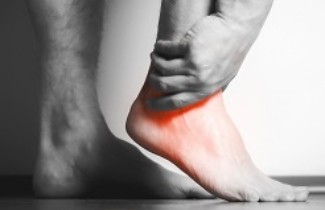
By Caitlin Alexander, PT, DPT, CAFS Chronic Ankle Instability (CAI)...Read More
By Caitlin Alexander, PT, DPT, CAFS
Chronic Ankle Instability (CAI) can plague runners with recurrent injuries. It is a condition that can develop after repeated ankle sprains and is characterized by repeated feelings of the outside of the ankle “giving away”. CAI has been shown to possibly even develop before adulthood, in adolescent sports.
Studies show that the biomechanics of those with CAI ware notably different with walking and running (and even standing). Following a lateral ankle sprain, 40% of individuals will go on to develop CAI down the road. The biggest risk factor for developing CAI is a history of lateral ankle sprain. The biggest risk factor for a lateral ankle sprain is ALSO a history of lateral ankle sprain. Why is that?
We know that mechanical strength of damaged ligaments during an ankle sprain can usually heal pretty well, but the sensory fibers that provide proprioception (awareness of the ground and where our foot is) in the joint and ligaments are lost. If an ankle has not healed properly or been rehabilitated properly following an ankle sprain, the risk for developing CAI increases.
The biomechanics of those with CAI
The research has repeatedly shown that those with CAI present with altered gait mechanics both walking and running. These individuals land with a more inverted foot posture and tend to laterally load their feet more, which can be problematic as this puts them at a higher risk for another lateral ankle sprain. These runners also have higher levels gluteus medius activation, potentially as a proximal neuromuscular strategy to compensate for loading the outside of their feet. Individuals with CAI are also unable to fully pronate the foot and load the big toe and first ray prior to toe-off. Research also shows the benefit of strengthening the peroneus longus muscle, which everts the foot and controls pronation and first ray plantarflexion.
This is why it is critical to see a physical therapist as soon as possible after an ankle sprain to reduce the risk of it progressing to CAI down the road.
Rehabilitation
With CAI, the research is clear about the importance of dynamic balance training, proprioceptive training and strength training, particularly of the gluteus medius and peroneus longus muscles. If you are struggling with chronic ankle instability or have had a history of repeated ankle sprains, it is critical to see a physical therapist who can address your neuromuscular deficits and create a progressive plan to get you back to doing what you love.
References:
DeJong AF, Koldenhoven RM, Hart JM, Hertel J. Gluteus medius dysfunction in females with chronic ankle instability is consistent at different walking speeds. Clin Biomech (Bristol, Avon). 2020 Mar;73:140-148. doi: 10.1016/j.clinbiomech.2020.01.013. Epub 2020 Jan 20. PMID: 31986459.
Donovan L, Hetzel S, Laufenberg CR, McGuine TA. Prevalence and Impact of Chronic Ankle Instability in Adolescent Athletes. Orthop J Sports Med. 2020 Feb 18;8(2):2325967119900962. doi: 10.1177/2325967119900962. PMID: 32118082; PMCID: PMC7029541.
Lin, CI., Houtenbos, S., Lu, YH. et al. The epidemiology of chronic ankle instability with perceived ankle instability- a systematic review. J Foot Ankle Res 14, 41 (2021). https://doi.org/10.1186/s13047-021-00480-w
Lin CI, Khajooei M, Engel T, Nair A, Heikkila M, et al. (2021) The effect of chronic ankle instability on muscle activations in lower extremities. PLOS ONE 16(2): e0247581. https://doi.org/10.1371/journal.pone.0247581
Koldenhoven RM, Feger MA, Fraser JJ, Saliba S, Hertel J. Surface electromyography and plantar pressure during walking in young adults with chronic ankle instability. Knee Surg Sports Traumatol Arthrosc. 2016 Apr;24(4):1060-70. doi: 10.1007/s00167-016-4015-3. Epub 2016 Feb 8. PMID: 26856315.

0

0

0
you must login
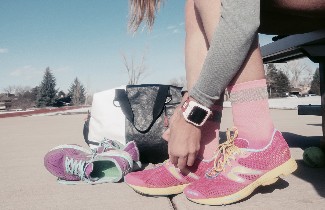
By Caitlin Alexander, PT, DPT, CAFS One of the most common question...Read More
By Caitlin Alexander, PT, DPT, CAFS
One of the most common questions we get from our runners is in regard to what kind of running shoe they should wear. This happens to also be the most difficult question to answer straightforward! Running shoes are highly subjective and what works for one person may not necessarily work for another. There are so many different brands and models on the market that it can be a bit overwhelming to know where to start. Below we break down a couple of the important concepts when it comes to running shoe style to help you make the best choice.
Do you need stability or neutral shoes?
Stability and motion-control shoes were historically designed to decrease excessive motion at the foot and ankle, such as excessive pronation. Neutral shoes are lighter, a bit nimbler, and allow the foot and ankle to move more naturally. The most important thing to remember when it comes to running shoes is that shoes do not run, PEOPLE do. When a runner is considering what type of shoe he or she needs, controlling motion may not the best approach. Footwear doesn’t necessarily stop or improve any type of foot motion. And often times, people would rather spend money than do the work it takes to improve their bodies and their feet.
We’ve all been told that pronation is bad, but in reality, pronation is a necessary part of the ankle’s shock absorbing system. The issue arises when that motion is uncontrolled due to poor foot and ankle intrinsic strength. Excessive motion at the foot and ankle can lead to a whole host of issues up the chain including plantar fasciitis, Achilles tendinopathy, knee pain and hip pain. As a physical therapist, my first line of defense is always to train the body to handle the demands of running. It is a much more sustainable, long term approach to healthy running. A stability shoe can be used in the interim to reduce these forces while a runner is working on improving foot and ankle control, but it should not be a permanent, long term solution.
Lots of cushion vs. minimal cushioning. Which is better and why?
This is a hot topic in the footwear industry right now, with the current trend towards highly cushioned shoes with carbon plates and large stack heights. Did you know that your running mechanics change based on your shoe’s stiffness and the material it is made out of? Shoes with lots of cushioning and a large stack height bring our feet further off from the ground, and as a result, our body loses its sense of where the ground is (or its proprioception). This sensory information from our environment is important because it tells the foot how to properly load the body when it hits the ground. With so much material between the foot and the ground, highly cushioned shoes can create a disconnect between the feet and the brain, causing weak feet and issues up the kinetic chain.
We do know that when you run barefoot, you increase your cadence and you have a shorter step length. In shoes, you put greater negative forces through the knee and the hip because you land stiffer. Imagine running on the beach barefoot as the sand moves underneath your feet. Your body naturally stiffens up as a response to that unstable surface. So, is the answer barefoot running? Absolutely not. Yes, our feet are designed to function without the need for shoes or orthotics, but our bodies are not designed to pound miles and miles of pavement and concrete, like we do in our modern world. Unless you’ve been walking around barefoot your whole life, you probably need some protective, shock-absorbing material between your feet and the road.
Another thing to consider is the heel height of traditional running shoes. A higher heel-to-toe drop (the offset between the height of the back and the height of the front of the shoe) shifts the low back into extension and puts the load through the knees. This moves the body towards a more quad-dominant position and makes it harder to engage your glutes (the backside of the hip, a runner’s powerhouse) when running.
I always direct my runners towards a shoe in the middle of the spectrum in terms of stack height, cushioning and heel-to-toe drop, unless they already run in minimalist shoes with no problems. If you’re an urban runner and log most of your miles on hard surfaces like pavement and concrete, it might be worthwhile to have a pair of cushioned shoes in your closet to use occasionally for minimizing the harsh impact of those surfaces. I also recommend my runners rotate through a couple different types of shoes, so they aren’t running in the same shoe every day.
Racing flats vs. everyday trainers.
Racing flats differ from everyday trainers in that they are designed to be lighter, faster and more minimal than the traditional training shoe. A racing flat has enough cushioning for a distance race, but is essentially a stripped down, faster version of a trainer. And racing flats are proven to be faster than trainers. Racing flats are a great compliment to your training for faster efforts like tempos and threshold intervals, especially if you plan to race in your racing flats. They give you a better feel for the ground and do a better job and teaching your foot and ankle how to act as a shock absorber and propulsive force. However, I wouldn’t recommend using them for a majority of your runs because they are more minimal, especially if you primarily run on harder surfaces. If you already have a dependable pair of trainers and are looking for a secondary shoe, a racing flat or slightly lighter, more minimal trainer can be a great compliment to your training.
Does brand really matter?
Prominent biomechanist Benno Nigg published a heavily referenced study about running shoes that found that comfort, above all else, was the best determinant of a shoe’s utility. How well the shoe fits your unique foot and how it feels is more important than any flashy technological advancement. That being said, try on a bunch of different shoes to see what feels and works best for you.
As a PT, I rarely recommend a particular brand of shoe to my runners. Instead, I give them guidelines for the technical aspects they should be looking for in a shoe (level of cushioning, heel-to-toe drop, stack height, midsole stiffness). Be well informed before you walk into a running store and don’t buy into the hottest, flashiest shoe craze on the market.
Is it better to go to a store to try on shoes or can I order a bunch online?
Ideally it is best for you to be able to try different pairs of shoes on if you don’t have a good idea of where to start. Some online retailers will let you return shoes easily if they do not work for you. Some running stores also have lenient return policies that will let you try out the shoe for a bit before deciding to return it or not. Regardless of which outlet you choose, be sure to read all the fine print so you aren’t stuck with a shoe that ends up not working for you!
Other important things to note
Most running injuries are repetitive stress injuries that occur from the same stimulus or load applied to a tissue over and over again. Studies show that we can reduce injury risk by switching up your running shoes regularly. You can give your body a different stimulus by wearing a different shoe now and then which will put the foot in a different position and load different tissues.
When considering switching from one type of shoe to another, depending on how far they are from each other on the spectrum of minimalist-maximalist shoes, allow your body a long period to transition. If you’ve been running in highly cushioned maximalist shoes, do not buy a new pair of neural shoe and start doing all your runs in them. There should be a transition period (anywhere from a couple weeks to a couple months) where you gradually introduce the new shoe to your body and your feet. This method of graded exposure is a much more effective way to get into a different type of shoe without increasing your risk for injury.

1

0

0
you must login
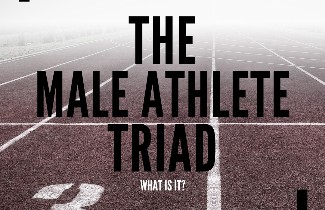
By Evan Culbert, PT, DPT What is the Male Athlete Triad? Over the...Read More
By Evan Culbert, PT, DPT
What is the Male Athlete Triad?
Over the past 30 years, research has developed our understanding of the Female Athlete Triad. More recently, research has shed more light on The Male Athlete Triad, a similar condition affecting men. While awareness about the Female Athlete Triad has grown in the endurance community, many are unfamiliar with The Male Athlete Triad.
Each of these conditions fall under the umbrella of Relative Energy Deficiency in Sport, or RED-S, a broader condition affecting both women and men. These are problems related to prolonged training in an energy deficient state, aka a state of low energy availability in the body.
Imagine the energy your body uses as money. This money is energy availability. For the sake of the metaphor, let’s call this, “energy dollars.” Eat breakfast? That’s a direct deposit of energy dollars into your body’s energy availability checking account. Going for a run? Time to make a withdrawal.
This is how our body works (albeit very oversimplified). You wake up and eat a bagel. Boom, 5 energy dollar deposit – you have energy available and are ready to run. Your run costs you 3 energy dollars. Your body makes physiological adaptations and you become a little faster.
Let’s say after you eat your bagel ($5 deposit), you go for a long run that costs 6 energy dollars and overdraft your checking account. That’s okay, your body can take out an energy dollar from your savings account – energy stored elsewhere in the body. Afterwords, you refuel, and your body builds back stronger.
But let’s say you don’t refill your accounts. And you do this day after day. Your checking and savings accounts are running dry, you’ve spent all your energy dollars and you go into energy debt. You are training in a state of low energy availability. Let’s step away from this kooky metaphor for a minute to look at a study:
In this study, runners reduced energy intake 50% of daily needs and ran 60 minutes on a treadmill every day for 3 days. This caused a 15% decrease in bone formation. In just 3 days! When we continue training in an energy deficient state, with an empty energy availability bank account, our body shuts down other critical processes in our body because there just aren't the funds for it. We have no resources to direct towards building back bone or recovery because in our low energy availability state, everything we have is going towards training. The longer we train with improper fueling, the more these effects are compounded. This is the root of Relative Energy Deficiency Syndrome, or RED-S, and it can manifest in dysfunction of metabolic rate, menstrual function, bone health, immunity, protein synthesis, cardiovascular health, and other bodily systems.
The Male and Female Athlete Triad’s each involve 3 interrelated conditions secondary to training in an energy deficient state. The Female Athlete Triad was coined prior to RED-S over 30 years ago. It consists of low energy availability, altered bone mineral density, and menstrual dysfunction. Increased research in recent years on the Male Athlete Triad has furthered our understanding of the condition, and like The Female Athlete Triad it is important to know how to recognize and address it.
What is the Male Athlete Triad?
3 interconnected conditions make up the triad:
1) Low energy availability (EA) – put simply, more energy is going out than coming in. To return to our metaphor, the body is operating without energy dollars in the bank and is paying for activity with credit – other bodily functions are suppressed as the athlete continues to train in an energy deficient state. Low EA can be present with or without disordered eating.
2) Impaired Bone Health – as illustrated by the study mentioned above, operating in an energy deficit has significant impact on the body’s bone health. Low bone mineral density is present in a bigger proportion of lean-sport athletes like runners, swimmers, jockeys, and cyclists.
3) Suppression of hormone function – Specifically, the hypothalamic-pituitary gonadal (HPG) function, resulting in decreased testosterone concentrations and decreased sex drive.
It is important to note that the male athlete triad is a continuum. There is no exact threshold value of energy availability that once crossed leads to metabolic changes and dysfunction. Instead, we see a spectrum: on one end we see optimal energy availability, bone health, and hormonal function, and on the other severely low energy availability, osteoporosis/possibly bone stress injuries, and Hypogonadaropic Hypogonadism (negative hormonal changes). These changes happen over time when training with low EA. When caloric intake is not enough to fulfil the cost of training load, athletes begin to go into “energy debt.” Initially, athletes may be able to perform well in a state of low EA, but it is not sustainable as they will continue to move towards the unhealthy end of the spectrum.
Athletes with or without disordered eating can experience the Male Athlete Triad. 8% of male athletes develop eating disorders, and this number is higher among “leanness sports” like running, swimming, and cycling. Unintentional undereating can also lead to low energy availability. However, it is not always a simple equation of caloric intake equaling energy expended during training to avoid going into energy debt. Oftentimes athletes fail to consider the impact of being a human being and dealing with the daily stressors of life! Life load and the stresses that come along with it can have an impact on our energy availability. Jobs, school, relationships, sleep, stress, quality of food, and difficult life events are all important parts of the equation that demand energy, and are important for any coach, athlete and clinician to remember.
Male athletes that continue to train with energy debt, aka in an energy deficient state, begin to demonstrate objective changes that indicate long term energy deficiency. This is as a result of not having energy remaining after the cost of exercise for the body’s basic processes, and includes:

0

0

0
you must login
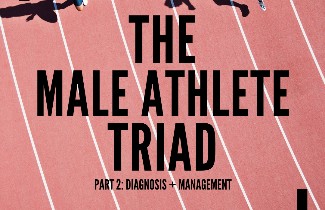
By Evan Culbert, PT, DPT Diagnosis and Management of The Male Athle...Read More
By Evan Culbert, PT, DPT
Diagnosis and Management of The Male Athlete Triad
To recap part 1, we know that The Male Athlete Triad is comprised of three interrelated conditions:
1) Low energy availability (EA): Energy intake < Energy expended. Important bodily functions are suppressed as the athlete continues to train in an energy deficient state. Low EA can be present with or without disordered eating.
2) Impaired Bone Health: Low bone mineral density, often manifesting in bone stress injuries in athletes.
3) Suppression of hormone function: Specifically, the hypothalamic-pituitary gonadal (HPG) function, resulting in decreased testosterone concentrations and decreased sex drive.
But how do we prevent and identify The Male Athlete Triad in athletes?
Increased awareness of signs and symptoms among medical professionals, coaches, parents, athletes, and sports organizations is an important step, but early screening and monitoring for RED-S and the Male Athlete Triad must become common practice for at-risk groups.
At-risk groups for developing 1+ components of the triad include “adolescent and young adult male athletes in sports that emphasize a lean physique (lean-sport athletes), especially endurance and weight-class athletes.” Screening of athletes in these sports (distance running, swimming, cycling, wrestling, etc.) should be a part of pre-participation physical exams beginning in middle school. While especially important in middle school – college-aged athletes due to peak bone development happening during this time, it is also important to continue to screen post-collegiate athletes in lean-sports. Formal screening should also happen when an athlete presents with common symptoms of the Triad :

0

0

0
you must login
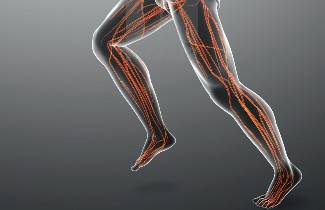
By Caitlin Alexander, PT, DPT, CAFS One of the most challenging asp...Read More
By Caitlin Alexander, PT, DPT, CAFS
One of the most challenging aspects of my job as a sports physical therapist is determining what tissue in the body is the source of a patient’s pain. There are a variety of types of tissue sources of pain and sometimes an injury can cause multiple. Because all muscles, tendons and soft tissues in our body are innervated by nerves, a foot problem could very well be manifesting from a nerve-related problem else where in the body. Nerves run from head to toe so any kink or sensitivity long that nerve route can potentially cause pain (think kinks in a long hose).
Nerve-related pain is a lot more common than most practitioners realize, especially in the athletic population. Probably 20% of injuries I treat in runners, cyclists and triathletes are actually nerve related pains that present as a muscle, tendon or other soft tissue injury.
What is nerve pain?
Nerve (or neurogenic) pain can occur any time a nerve is sensitized. This sensitization can happen at any point along a nerve’s trajectory - from the point where it exits the spinal cord in the spine, and along the the nerve’s route to any of our limbs. Once a nerve is irritated, it can be very sensitive to stretch, compression and even chemical changes (hormones, inflammation from another local tissue) in the body.
Nerve pain can be peripheral (an irritation to the nerve along its route as it goes throughout the body’s limbs), or central (originating from the spine). Central pain can often refer peripherally to various parts of the arms or legs and mimic other orthopedic or musculoskeletal injuries.
So how do you know if your pain is nerve-related pain? Nerve pain can be tricky to diagnose but there are few patterns that are worth pointing out:
1. Your Pain Doesn’t Respond to Traditional Treatment - if a patient comes into my clinic with an injury that failed to resolve with other PT, I always look at the spine or for neurogenic symptoms. If you’re treating a distal injury and it is not responding, always look up the chain! I had a patient come in with lower leg pain that wouldn’t resolve with previous massage, dry needling, or soft tissue work. I looked further up into her hip and low back and found that her pain was actually referral pain along the sciatic and common fibular nerves.
Traditional treatments for musculoskeletal injuries - soft tissue work, stretching, strengthening, dry needling - usually fail to resolve nerve pain if you are being treated peripherally. There is no injured tissue there. Aggressive foam rolling and stretching can also make an irritated nerve more unhappy.
2. Your Pain is Dull, Diffuse, Hard to Pinpoint, or Moves Around - a soft tissue injury like a muscle strain or tendinopathy is usually pretty easy to pin down. Location and pattern of pain are fairly consistent and localized. Nerve pain can be elusive and difficult to pinpoint where it hurts. And palpating the tissue often does not result in that familiar pain (or any pain at all). If you feel pain in a certain area but touching that tissue does not result in that same pain, it’s likely what you are feeling is referred pain - pain referred to that area from a location further away. Nerve pain can be dull, achy, diffuse, sharp, shooting or accompanied by pins and needles.
3. Your Pain is Variable and Doesn’t Relate to Activity Level - when patients come in with nerve-related pain, it is difficult for them to find a pattern of pain. It’s not predictable or consistent with their activity level. Sometimes they have pain from the first step of running, sometimes they don’t. Sometimes it gets better throughout a run, sometimes worse. They might also have pain just sitting on the couch. Sometimes the pain moves from one part of the body to another, anywhere along that nerve’s distribution.
4. You Have Pain at Rest - this is an important one. Random jolts of pain just sitting on the couch or lying down in bed can signal nerve or referred pain. If the nerve pain is a result of nerve entrapment or compression elsewhere, rest will not make it better. Unless you have an acute orthopedic injury, having symptoms at rest can be a red flag for nerve pain.
5. You Get No Answers From Diagnostic Imaging - nerve pain or an irritated nerve does not present itself on MRI or Xray. When a patient doesn’t respond to traditional PT, imaging is often the next route. So it can be disappointing when an MRI or Xray shows no pathology at all. An even more serious consequence is when the imaging shows pathology that isn’t necessarily related to that patient’s pain. I see this WAY too often and it can be even more psychologically damaging.

0

0

0
you must login
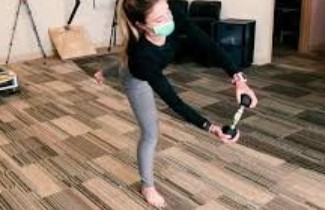

By Caitlin Alexander, PT, DPT, CAFS There's a lot of talk these...Read More
By Caitlin Alexander, PT, DPT, CAFS
There's a lot of talk these days on the topic of 'mobility' in terms of sports performance and injury prevention. Runners are always looking for ways to improve performance while simultaneously avoiding those annoying overuse injuries. While mobility is one of the most important aspects of sport, it ties heavily into stability. You can't have one without the other. Mobility without stability and vice versa can lead to subpar performances, poor movement patterns and injuries. This leads us to the topic of MOSTABILITY = mobility + stability. Mostability is a term coined by Dr. Gary Gray of the Gray Institute to blend both elements to complete a desired task (i.e. running).
MOBILITY = the ability of your joints to move through a given range of motion
STABILITY = the ability of the body to maintain postural equilibrium and support joints during movement
There’s a reason why we feel tightness in muscles or joints. Our perception of this tightness is not necessarily related to an overworked muscle and does not always mean that we should stretch it. But rather, the body’s nervous system is telling you that there’s instability in that region. Instability signals the brain and nervous system to put the brakes on because it feels threatened. It does this by borrowing stability from somewhere else to provide a sense of security. This is called compensation. This compensation is the tightness that we feel.
As the Gray Institute says:
“Just as important, but not as obvious is the 'mostability' of the pelvis when our foot hits the ground in running. At ground contact, the posterior-lateral muscles of the hip have a large role in decelerating the motions of the hip, knee, and foot created by gravity and ground reaction force. These muscles need the pelvis to be a stable base from which to generate force, but the pelvis is moving. So again, both stability and mobility are necessary. During running, the one foot will be in the air when a stable yet mobile pelvis is required. How does the pelvis remain stable while it is moving without the connection to the ground? The mass and momentum of the swinging leg, trunk, and arms all contribute to the ability of the pelvis to have 'mostability'.”
So how can you incorporate mostability into your routine? Below is an example of an exercise that we use at BUILD to help runners achieve dynamic single leg strength, stability and mobility at the pelvis.
REVERSE LUNGE with STEPOVER
The hip joint is a dynamic joint that can move in all 3 planes of motion. This exercise is great for runners in that it three dimensionally combines single leg balance, stability and mobility all in one. The focus should be on gaining mobility through the hip joint of the standing leg, so be sure to really open up your trunk, as shown in the video below. Performing the exercise barefoot may be more difficult but will yield better proprioception integration of the foot and ankle. Try it with body weights or with a dumbbell out in front for added trunk and shoulder recruitment.

0

0

0
you must login
We are all built to move, but when the geometry and balance of the body falls out of alignment, movement becomes difficult and less fluid. Misalignment causes deficits in some areas, leading to over-compensation in others. Weaknesses and inefficiencies in areas can create stress on other structures up or down the kinetic chain. This results in a suboptimal chain of power which saps performance and increases risk of injury.
At BUILD, our goal is to create bodies that move efficiently, powerfully, and gracefully. We interpret movement as a whole-body system of cause and effect. We focus on finding and treating the root cause of the injury, as opposed to simply addressing symptoms of an injury. All athletes should be able to perform the basics when it comes to movement of their sport and with full range of motion. Anything less and you’re not being all you can be. Whether you're an elite or a weekend warrior, we will help you BUILD a better you.
Training Block was created with a mission to support and empower runners, in order to elevate our sport. We do so by giving runners access to a network of local sport performance providers, who provide runners with the care they need from coaching, physical therapy, massage, strength training, and more. We also give providers an easy way to connect with each other and share articles, videos, and other resources that benefit runners and providers alike. For every service booked through Training Block, we donate 10% of our revenues to Training Block’s Elite Athlete Fund, which sponsors elite runners who do not have professional contracts and need financial support for racing at their highest level.
Copyright © 2024 Training Block. All rights reserved.
Refer a friend and get $5 discount on order!